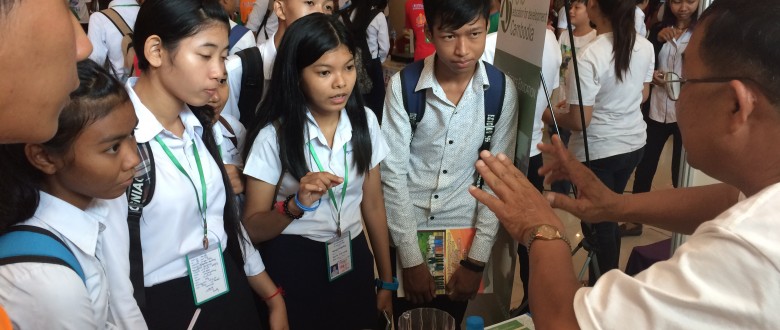
On the International Day of Women and Girls in Science, the world stops and ponders the strong gender imbalance in the world of STEM, both at school and in the labour force. One important barrier girls and young women face, is the lack of female role models in STEM education. In Cambodia, VVOB is working hard to get this right.
The future is STEM
It’s acronyms galore on this International Day. STEM stands for ‘science, technology, engineering, and maths’ and encompasses all jobs related to these four fields. In the 21st century, STEM innovations have become increasingly important in the face of the modern-day challenges relating to globalisation, such as climate change, health, and inequality. At the same time, globalisation presents plentiful of opportunities, yet these opportunities are unequally enjoyed by all.
The Sustainable Development Goals (SDGs) promote sustained economic growth, higher levels of productivity, and technological innovation. In other words, the SDGs are largely dependent on STEM. This is most obvious in SDG 4 on education – which literally mentions the importance of scholarships for STEM education – and SDG 8 on decent work. But SDG 5 on gender equality too benefits from more investment in STEM education, on the condition that all learners, no matter what gender, are included in the efforts.
Gender is high on VVOB’s agenda. Acknowledging the importance of STEM education for equal opportunities and pay in the world of work, VVOB is active in several countries in ensuring girls and young women are not left behind when it comes to STEM. In Cambodia, the focus is on gender-checking teaching materials and dismantling limiting gender stereotypes.
Male dominance
The gender gap in terms of enrolment in primary education in Cambodia is gradually closing, but the chances of a female student still dropping out of school grows with age. Indeed, in upper secondary schools and tertiary education systems the girl student is underrepresented.
The lack of female role models to look up to for young learners, such as educated mothers and female teachers, is an important reason why some quit school during their adolescent years. The teaching profession has indeed been male-oriented for a very long time in Cambodia, but there is a positive trend towards greater feminisation of the profession. However, teacher trainers are still mostly male (63 percent) and this male dominance grows stronger at every next level of the education system.
Keeping girls on board
VVOB is working with all 18 Provincial Teacher Trainer Centres to break this vicious cycle of misrepresentation of girls, especially in maths and sciences. VVOB introduced gender mainstreaming concepts in teacher training, so student teachers are encouraged to counter gender stereotypes in their teaching practice by promoting female scientists as role models.
In cooperation with the teacher training centres, VVOB also developed new, female-friendly science and maths teaching material, amongst which three gender-neutral textbooks for maths and two for science. They were gender-checked with UNESCO’s Toolkit: Is the language gender-neutral? Are men and women represented equally? What psychological traits are attributed to female and male characters? The textbooks were designed to dismantle existing stereotypes in the materials young learners read and stimulate girls by depicting female role models in active roles.
Maths teacher trainer Ms. Sek Soyoeun, who was trained on gender by VVOB, witnessed her student teachers paying more attention to gender equity: “As a mentor during their teaching practice, I noticed that my student teachers applied in their classrooms what they had learned in mine. Groups for assignments are now mixed, and the student teachers give leading roles to girls and boys equally.”




